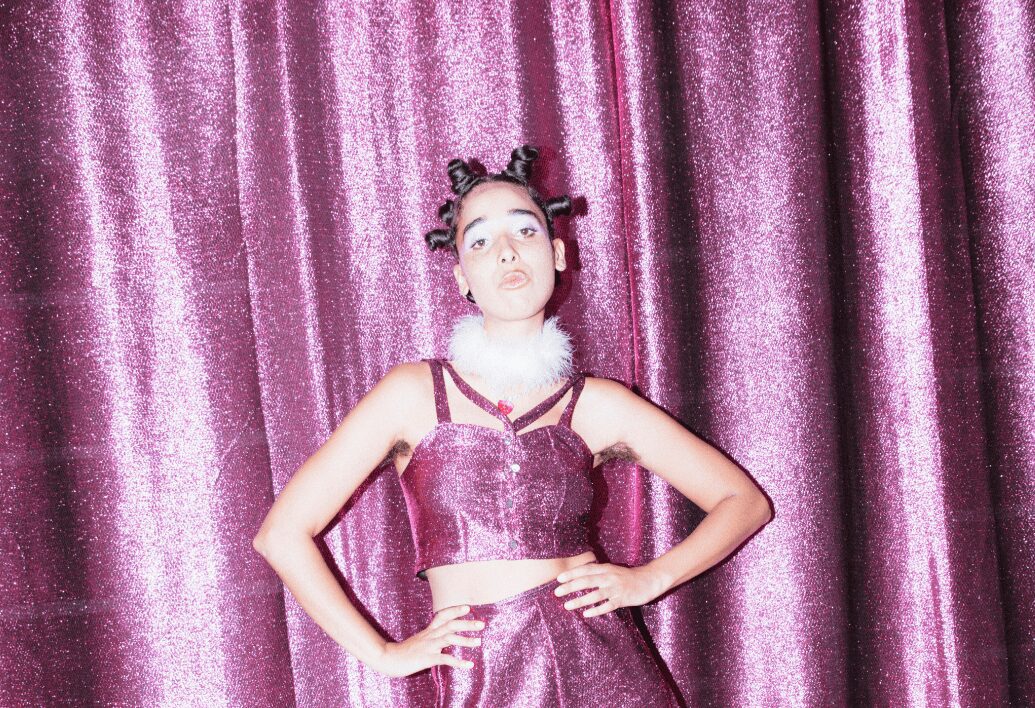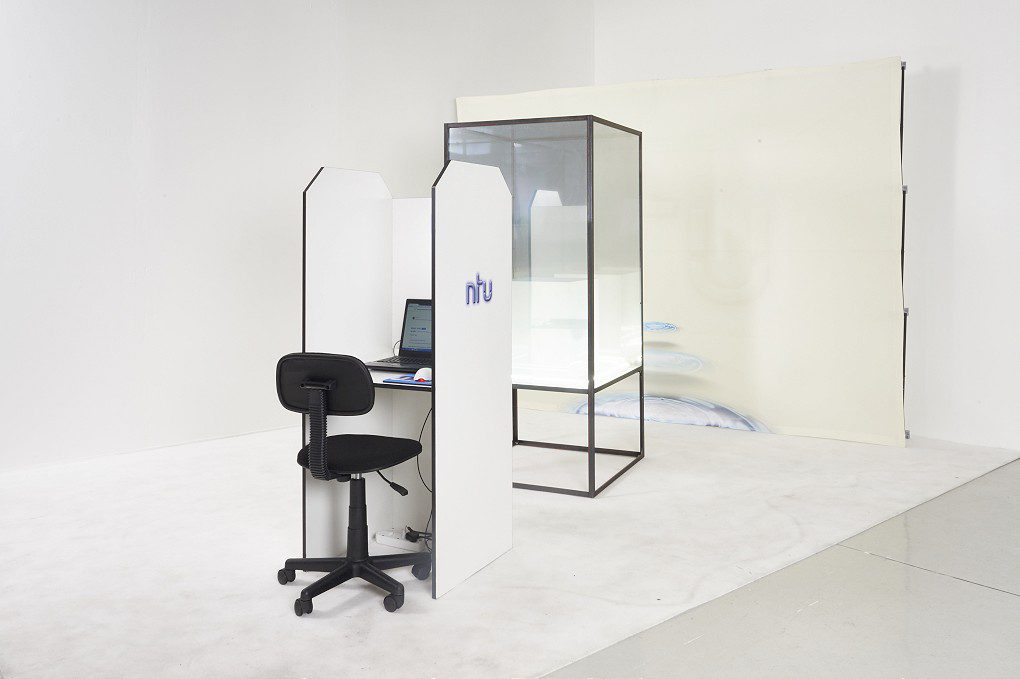French-Guyanese-Danish media artist Tabita Rezaire talks to C& about decolonisation, health, politics, collaboration and the West’s discovery of art from African Perspectives

Tabita Rezaire, Portrait from Cunty Party. Courtesy of the artist
An Paenhuysen: You call yourself a “warrior-healer”. Could you tell us a little about the wounds you’re healing with your art?
Tabita Rezaire: Survival hurts, for every conscious being. Yet, for some it’s harder as the society they live in devaluates their existence or consistently persecutes their lives. Internalized and accumulated pains from generational, ancestral, or experienced traumas make one’s ability to navigate the world a struggle. These traumas may manifest in different ways, but I believe they all stem from severe disconnections. We are disconnected from the earth, from each other, from our own selves, and from the universe. A warrior-healer is seeking to restore energetic balance on all those levels. Because fighting alone is consuming and draining, if you don’t have tools to nurture your energies you’ll burn out.
AP: The mind-spirit-body pollution inflicted through white Western dominance is a topic in your work on all levels: from visual language to food. Yet your major focus and tool is the Internet. Why?
TR: Well it isn’t, I just get asked about this more. All realms of our realities need to be decolonized. Because it is our health that needs to be politicized. And our health is equally threatened by our diet, the shaming of our cultures, the fetishization of our bodies, the murders of our siblings and the technologies that we use. I don’t impose a hierarchy onwhat needs to be dismantled. It is the whole colonial-capitalist-patriarchal-scientific-technological-medical-penal-educational complex that needs to be taken down. For this to happen, we need to re-connect and decolonize on all levels and become response-able. That is a commitment and a long journey: healing takes time. Healing is hard. Healing hurts. And it is not linear. We’ll collapse again and again, but each time we’ll be able to deal better with what’s to come.
.
.
AP: Your video work suggests the idea of “unlearning” the Internet. That’s a difficult thing to do, because once one has learnt the rules, they become invisible. How do you go about it?
TR: Like any institutionalized violence, the Internet is pervasive and insidious, especially when you benefit from it. That’s why we’re complicit. Because even if it is a coercive, exploitative, and oppressive space, it’s cool. I guess it comes down to how much we’re willing to compromise.
In practical terms I feel like there are two strategies. One is about occupying and creating safer spaces within a violent system, by being vocal and providing counter-representations and -narratives. In doing that though, you are still being complicit in an exploitative and oppressive structure.
The other strategy is about dismantling and recreating a more sustainable, safe and fair information and communication technology. That’s the real vision: rejecting the actual system although you’re benefiting from it. Technically I’m not sure what that would mean in Internet terms, maybe crypted P2P networks, or, to a certain extent, using the deep web. But I’m confident that something will manifest.
AP: Internet aesthetics are not always the most attractive. Yet, how important is beauty in your work for you?
TR: Beauty is not really something I think of in terms of my work. I wouldn’t be able to define what I find beautiful or what beauty means. Although I know it is very important to me, more in terms of the space I inhabit or the people I surround myself with – in the sense of a radiant energy.
I wonder why you don’t find Internet aesthetics attractive. According to which standards? What resonates within each of us is all very subjective and constructed, especially in terms of art appreciation. For me, it’s more about the ability to feel uplifted, divine, and to be grateful for what I’ve witnessed or manifested. Beauty is about raising our vibrational frequency and that’s what healing is.
AP: You’re an activist – you’re an artist. I’m confused. I thought those were two separate things. How do you see it?
TR: Well, you can be or do many different things simultaneously. You can be a lawyer and a porn star. The legacy of modernity and its oppressive logic of rationality deny what life is about: interconnection, paradox, and contradiction. The obsession with one-dimensional specialization is also dangerous because it develops a culture of arrogant ignorance. Artist and activist are just denominations among many that could apply. As I’ve said before, I feel more like a health practitioner providing and sharing tools to nurture our emotional, political, technological, and spiritual health. So my work as an artist, researcher, yoga teacher, community worker, emotional laborer, cosmetics maker, gardener, friend, and lover, seeks to convey and share my vision.
AP: Does art have healing powers, is it spiritual?
TR: Art can have the power to heal. Everything holds the potential to heal or hurt, depending on uses and users. So art can heal but it can also be a tool of repression and coercion. There are countless examples of art being used as a tool for dangerous propaganda. Now, if art is spiritual? That is where art comes from. Before there was an art market tied to an unregulated capitalist financial system, art was a medium to connect with a higher power. Communities worldwide used artistic forms to communicate, praise, receive and give thanks to the divine. Here again, we’ve been disconnected from our purpose. Now we are creating commodities to be consumed and sold. I don’t think art has lost its power, though.
AP: Are you ever afraid for your artwork to be perceived as “esoteric”?
TR: Why should I be afraid? There will always be people that resonate with who I am and what I do and others who won’t, and that’s fine. Society lives off our self-doubts and feeds off our fears. I have no time for that. I am comfortable that what I create comes from a place of love, and as Alexandra Kelbert so beautifully put it: “I rage out of love and I love in rage”.

Tabita Rezaire, NervousConditioner.life.ntu.001, 2015, NTU. Mixed media, installation. Courtesy of the artist
AP: The Western art market has Africa on its radar at the moment. What is your take on this trend?
TR: Well, the art market is just columbusing, busy ‘discovering’ new territories, new resources and capital to accumulate. It has positive effects though: it challenges the monolithic landscape of art, and gives economic opportunities to more artists to have their works shown and sold. Unfortunately many African countries do not invest enough in the arts, so there is less of a culture of ‘collectors’. What happens is that most artworks made by African artists get sold to Western collectors or institutions. Which is sad because once again it is cultural capital leaving the continent. We have to be vigilant that ‘African art’ doesn’t only reflect a romanticized construction that caters to a Western audience. I for certain am also benefiting from this sudden interest. Some may feel, inappropriately, as I’ve lived in South Africa for less than two years. But then, isn’t the Pan-African project to encompass all diasporic identities?
C&: You’ve started the tech health company NTU, you run the art studio Malaxa, and you’re launching another new space. What is the benefit of collaboration for you?
TR: There’s this cheesy meme that’s circulating a lot: ‘if you wanna go fast, go alone, if you wanna go far, go together’. But truly: collaboration is so powerful it creates magic. It’s about joining forces and I’m blessed to be able to work with people I love and admire. Also showcasing other people‘s work and vision is very important for me, because I don’t exist in a vacuum. Building a network of people that acknowledge and promote each other’s worth is vital. Especially within the art world, which is all about egos and competition.
tabitarezaire.com & Tabita’s instagram
.
An Paenhuysen works as a freelance curator, art critic and educator living in Berlin. She is a fervent art blogger and teaches art criticism online at Node Center for Curatorial Studies.
More Editorial